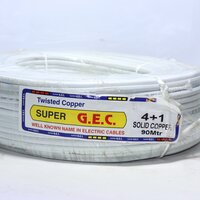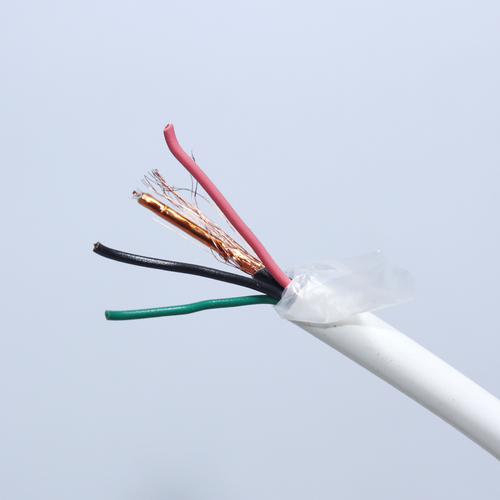4+1 CCTV Camera Wire Copper (90 MTR)
1217 INR/Roll
Product Details:
- Product Type 4+1 CCTV Camera Wire Copper (90 MTR)
- Material Copper
- Usage Industrial / Domestic
- Insulation Material PVC/ COPPER
- Conductor Material Copper
- Length 90 Meter (m)
- Size 90 MTR
- Click to View more
X
4+1 CCTV Camera Wire Copper (90 MTR) Price And Quantity
- 1217 INR/Roll
- 1 Roll
4+1 CCTV Camera Wire Copper (90 MTR) Product Specifications
- 90 Meter (m)
- PVC/ COPPER
- White
- 4+1 CCTV Camera Wire Copper (90 MTR)
- Copper
- Copper
- 90 MTR
- Industrial / Domestic
4+1 CCTV Camera Wire Copper (90 MTR) Trade Information
- 5000 Roll Per Month
- 1-7 Days
- Free samples available with shipping and taxes paid by the buyer
- All India
Product Description
| CCTV camera systems often use copper cables for their wiring due to copper's conductivity, durability, and reliability. Copper cables are commonly used for transmitting both power and data signals in CCTV setups. They provide a stable connection and are less susceptible to interference compared to other materials. Additionally, copper cables can carry power over longer distances without significant loss, making them ideal for installations where cameras may be located far from the power source. There are different types of copper cables used in CCTV installations, including: Coaxial Cables: These cables consist of a central conductor surrounded by insulation, a metallic shield, and an outer insulating layer. Coaxial cables are widely used for transmitting video signals in CCTV systems. Twisted Pair Cables: These cables have pairs of insulated copper wires twisted together. They are commonly used for transmitting data signals in CCTV systems, such as Ethernet or RS-485 signals. Composite Cables: These cables combine multiple conductors within a single sheath, allowing for the transmission of both power and data signals. They are convenient for installations where space is limited or when running multiple cables is impractical. When selecting copper cables for a CCTV installation, factors such as the distance between cameras and the control center, environmental conditions, and required bandwidth should be taken into account to ensure optimal performance and reliability. Additionally, proper installation techniques, such as shielding and grounding, can help minimize signal interference and ensure the integrity of the CCTV system. |
Enter Buying Requirement Details










 Send Inquiry
Send Inquiry Send SMS
Send SMS Call Me Free
Call Me Free